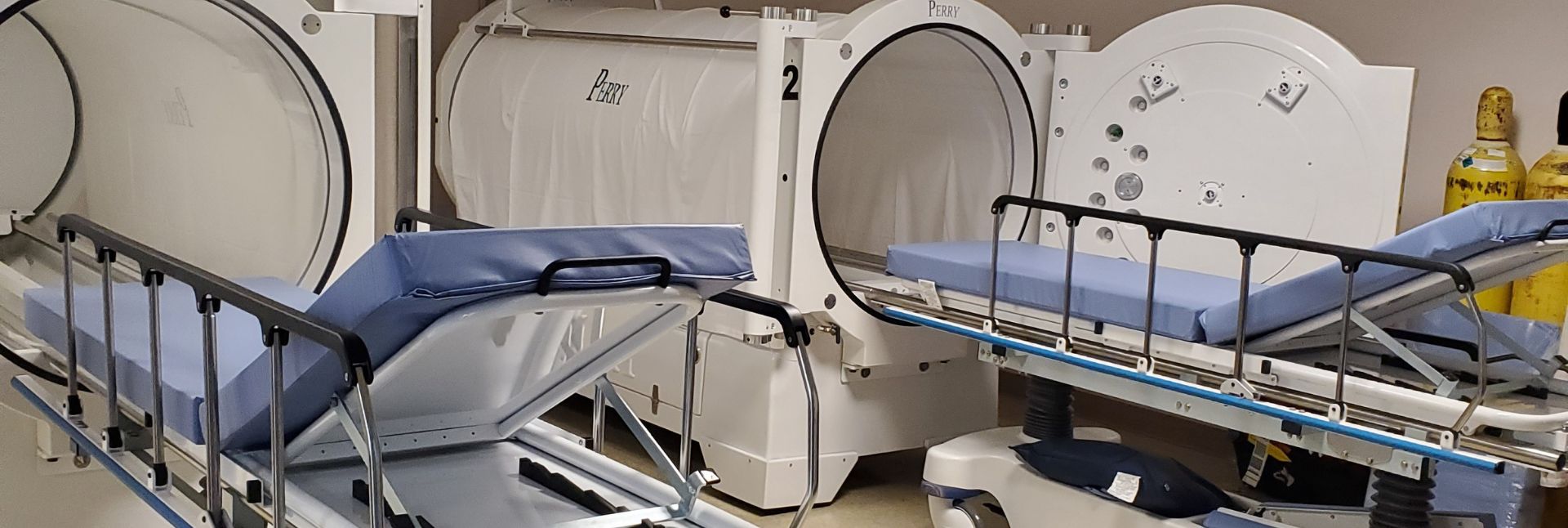Hyperbaric Oxygen Therapy: A Game-Changer for Your Community
Integrating Advanced Wound Care & Hyperbaric Oxygen Therapy (HBOT) into your facility not only enhances patient care but also positions your facility to meet an underserved and critical need in the community. With CutisCare's comprehensive wound healing program, you can expand your hospital or clinic's ability to treat chronic, non-healing wounds, improve patient outcomes, and ensure the best possible care for those who need it most.
What Makes Our Wound Care Program Stand Out?
Our advanced wound care program, delivered in partnership with CutisCare, focuses on a holistic approach to treating complex, non-healing wounds. The program is built on evidence-based practices and utilizes a variety of treatment modalities tailored to the unique needs of each patient. This comprehensive care strategy provides a foundation for improving healing rates and reducing complications in patients who suffer from wounds that have resisted traditional treatment methods.

Many of CutisCare’s wound healing programs have been in continuous operation for over 30 consecutive years, demonstrating our success in improving patient outcomes. And, it attests to how our wound care and hyperbaric management approach delivers optimal healthcare and financial results for our partners.
The Importance of Hyperbaric Oxygen Therapy (HBOT) in Wound Care
CMS-Approved and Reimbursable Indications for HBOT
Hyperbaric Oxygen Therapy (HBOT) plays a critical role in enhancing the effectiveness of advanced wound care treatments. By increasing oxygen availability to damaged tissues, HBOT accelerates the healing process, reduces inflammation, and promotes the growth of new blood vessels in affected areas. This therapy is an essential component of a wound care program for patients with chronic conditions that impair wound healing, such as diabetes or circulatory issues.
HBOT is proven to significantly improve outcomes for patients with:
Diabetic wounds of the lower extremities (ex: foot wounds)
Soft tissue radionecrosis (tissue damage caused by radiation)
Osteoradionecrosis (bone injury caused by radiation)
Compromised skin grafts
Chronic refractory osteomyelitis (bone infection)
Acute traumatic peripheral ischemia (tissue injury to an extremity caused by lack or loss of blood flow)
Crush injuries/suturing of severed limbs
Progressive necrotizing infections, such as necrotizing fasciitis (death of tissue caused by fast-spreading bacterial infection)
Acute peripheral arterial insufficiency (which can lead to ulcers and other non-healing wounds)
Actinomycosis (rare bacterial infection that causes sores and abscesses)
Gas embolism/air embolism (blockage of blood supply to a vital organ)
Gas gangrene/myonecrosis (bacterial infection)
Acute traumatic peripheral ischemia (tissue injury to an extremity caused by lack or loss of blood flow)
Carbon monoxide intoxication/poisoning
Cyanide poisoning
Decompression illness (sometimes called diving sickness)
These conditions often require specialized care that combines modern medical techniques with advanced therapies like HBOT. By introducing HBOT into your wound care program, your hospital can provide life-changing treatments for patients who otherwise have limited options for healing. Aside from the Centers for Medicare & Medicaid Services (CMS)-approved conditions above, HBOT therapy is continually being researched as a viable treatment for a range of acute and chronic conditions.
How CutisCare Supports Your Facility's Wound Care Program
CutisCare partners closely with your facility to integrate HBOT into your existing wound care program. Our team assists with everything from blueprint to bedside to ensure your program is successful. Digging in on areas like:
- Analyze local demographics and CMS data to identify populations in need of advanced wound care.
- Develop educational campaigns targeting physicians, patients, and caregivers to inform them about the availability of HBOT.
- Create a customized plan for implementing HBOT, ensuring it complements and enhances your hospital's wound care offerings.
Our comprehensive approach not only improves healing outcomes but also positions your hospital as a leader in the treatment of chronic non-healing wounds, strengthening your reputation and attracting patients in need of specialized care.

Learn how a CutisCare partnership will help you deliver cost-effective
and essential wound care in your community.
Patients Will Thank You
